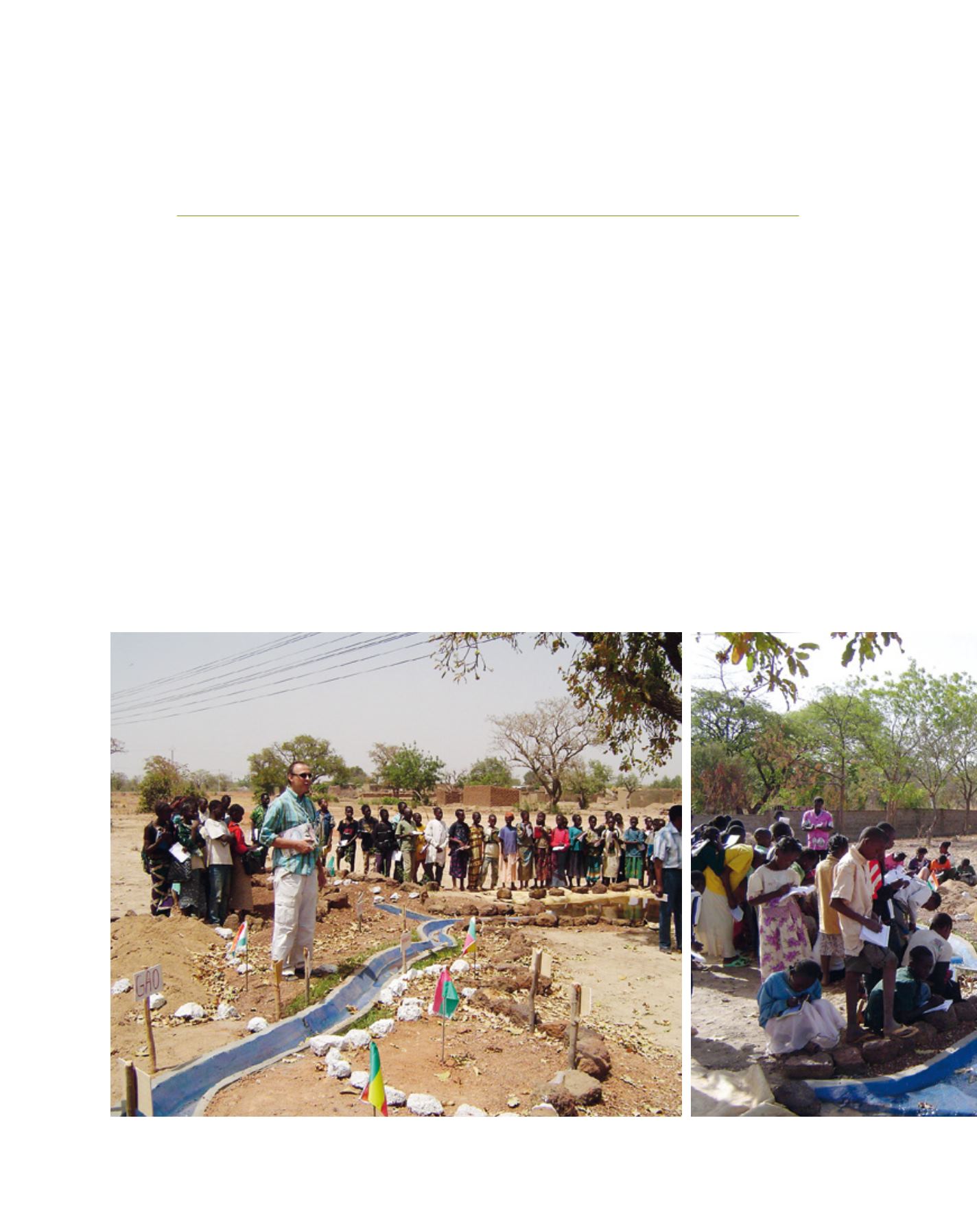

[
] 74
Participation in the management of the
Niger, Senegal and Congo river basins
Christophe Brachet and Daniel Valensuela, Deputy Secretaries, International Network of Basin Organizations
T
here are 276 transboundary rivers and lakes and more
than 300 aquifers shared by riparian countries around
the world. Transboundary basins cover 45 per cent of
the world’s lands, linking two or more countries through water
resources located above and below the Earth’s surface. Many
of the world’s populations and ecosystems therefore depend
on water resources crossing national borders. Emerging crises
related to population growth, climate change, urbanization,
increasing demand for energy and food or regional instability
affect water resources management. The International Network
of Basin Organizations
(INBO) appreciates how
this situation
becomes more complex with transboundary waters.
The willingness of states to cooperate regarding water manage-
ment may derive from specific issues or common goals, regional or
community dynamics or a risk of conflict. Establishing
transboundary basin organizations broadly fosters
cooperation. Whatever the structure model of the organi-
zation, it is advisable that mechanisms are planned to
promote public and stakeholder participation and
supported by methods and means for consulting the
people concerned. Such mechanisms are implemented by
countries and basin organizations of three major trans-
boundary rivers in Africa: the Niger, Senegal and Congo.
The Niger Basin Authority (NBA), established in
1964 by the nine states sharing the Niger River Basin
(Benin, Burkina Faso, Cameroon, Chad, Ivory Coast,
Guinea, Mali, Niger and Nigeria) led to a shared
vision process marked by the adoption in 2008 of an
Action Plan for Sustainable Development and a Water
T
ransboundary
W
ater
M
anagement
Schoolchildren around the Niger Basin model during the first regional forum of basin resources users


















